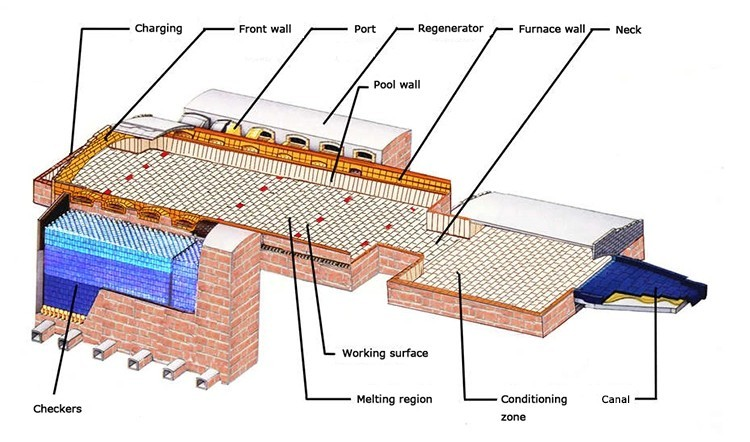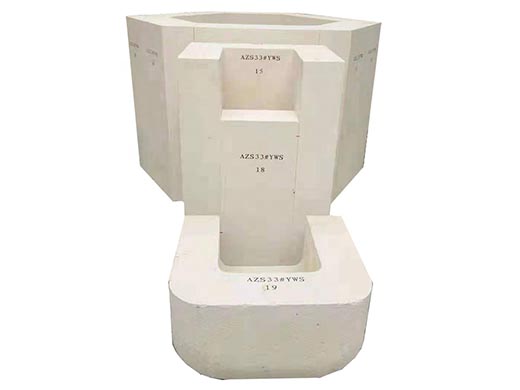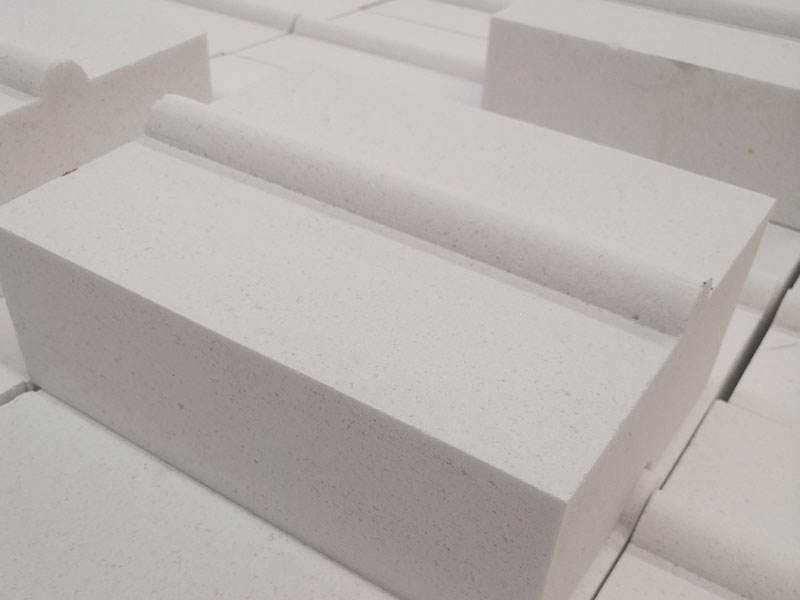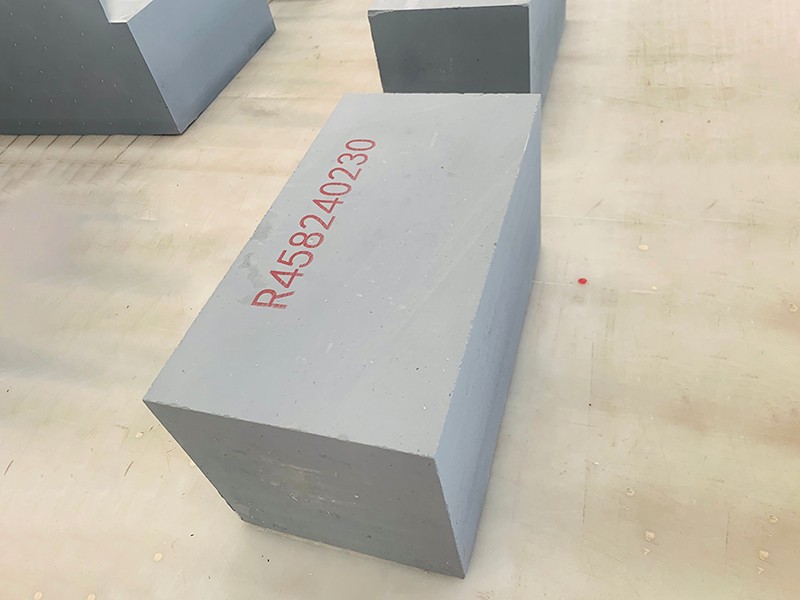News detail
Common fused-cast refractory materials in glass kilns
In the glass manufacturing industry, glass kilns are key production equipment, and fused-cast refractory materials are an important basis for ensuring the stable operation of glass kilns and improving the quality and efficiency of glass production. Due to their special properties and advantages, fused-cast refractory materials play an indispensable role in different parts of glass kilns.

The importance of fused-cast refractory materials
Glass kilns operate under harsh conditions such as high temperature, complex chemical erosion, and mechanical scouring. Fused-cast refractory materials need to withstand temperatures of 1500℃ or even higher, and at the same time resist erosion by chemical substances such as glass liquid and flux. If the refractory materials are improperly selected or of poor quality, the life of the kiln will be shortened, defects in glass products will occur, production costs will increase, and the economic benefits of the enterprise will be affected. Therefore, high-quality fused-cast refractory materials are one of the key factors for the sustainable development of the glass industry.
Common types of fused-cast refractory materials
AZS fused-cast refractory material: This is a fused-cast refractory material with alumina (Al₂O₃), zirconium oxide (ZrO₂) and silicon dioxide (SiO₂) as the main components. It is one of the most widely used varieties in glass kilns. It has good resistance to glass liquid erosion, especially in an oxidizing atmosphere, and has strong tolerance to glass liquids such as soda-lime-silica glass and borosilicate glass. Due to the presence of zirconium oxide, the material’s high-temperature structural stability and wear resistance are also excellent, and it can effectively resist the erosion of glass liquid. It is suitable for key parts such as the pool wall and flow hole of the glass kiln.

Corundum fused-cast refractory material: The main component of corundum fused-cast refractory material is alumina, which can be divided into different grades according to the different alumina content. High-purity corundum fused-cast refractory material has extremely high refractoriness and good high-temperature mechanical properties. It has strong erosion resistance, especially good resistance to erosion by alkaline substances. It is widely used in some special glasses, such as kilns for the production of alkali-free glass fibers, and can meet the high requirements of refractory materials for such glass production.

Zirconium mullite fused-cast refractory material: This material is based on mullite (3Al₂O₃・2SiO₂) and introduces an appropriate amount of zirconium oxide. It combines the high temperature stability of mullite and the corrosion resistance of zirconium oxide, and has good thermal shock resistance and resistance to glass liquid corrosion. It is used in some medium and small glass kilns, as well as parts with specific requirements for refractory performance, such as the breast wall and front wall of the glass kiln.

Performance characteristics of fused-cast refractory materials
High temperature resistance: The fused-cast refractory material is formed by high-temperature fusion casting, and the crystal structure is dense. It can withstand the high temperature environment in the glass kiln without softening or melting, ensuring good structural strength at high temperatures.
Anti-corrosion performance: Good chemical stability enables it to resist the erosion of various chemical substances in the glass liquid, slow down the loss rate of the material, and extend the service life of the kiln.
High mechanical strength: Fusion-cast refractory materials have high hardness and compressive strength, and can withstand the static pressure of glass liquid as well as mechanical impact and wear during the production process.
Application status and development trend
Application status: In today’s glass industry, different types of glass kilns select suitable fusion-cast refractory materials according to the type, scale and process requirements of the glass they produce. Large float glass production lines mostly use high-quality AZS fusion-cast refractory materials to ensure production continuity and glass quality; while special glass production kilns tend to use corundum or other high-performance fusion-cast refractory materials.
Development trend: As the glass industry develops towards high quality, high output and low energy consumption, higher requirements are placed on fusion-cast refractory materials. On the one hand, R&D personnel are committed to improving the performance of existing fusion-cast refractory materials, and further enhancing their erosion resistance, thermal shock resistance and high temperature performance by optimizing formulas and improving production processes. On the other hand, the research and development of new fusion-cast refractory materials is also constantly advancing, such as the use of nanotechnology and composite technology to prepare refractory materials with special properties to meet the growing needs of the glass industry. At the same time, environmentally friendly fused-cast refractory materials have also become a research hotspot, reducing environmental pollution in the production process and achieving sustainable development.
In short, fused-cast refractory materials occupy a vital position in glass kilns. With the continuous development of the glass industry, fused-cast refractory materials will continue to innovate and progress, providing strong support for the high-quality development of the glass industry.


Send inquiry
Please Leave your message you want to know! We will respond to your inquiry within 24 hours!